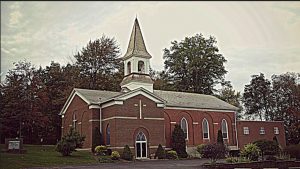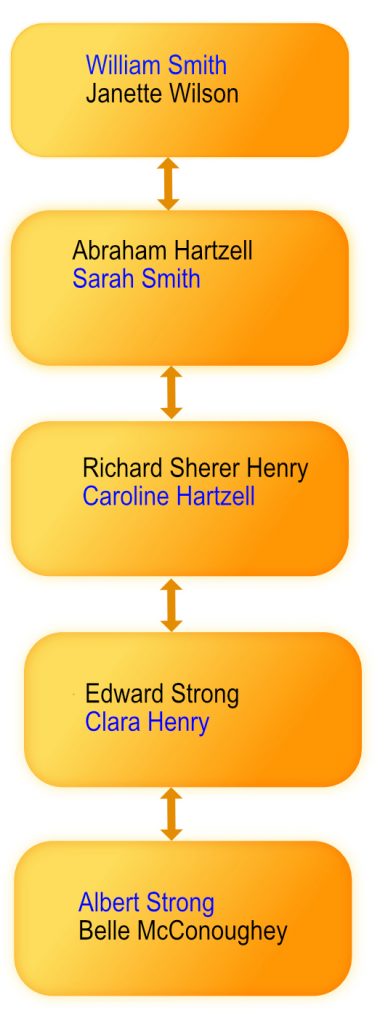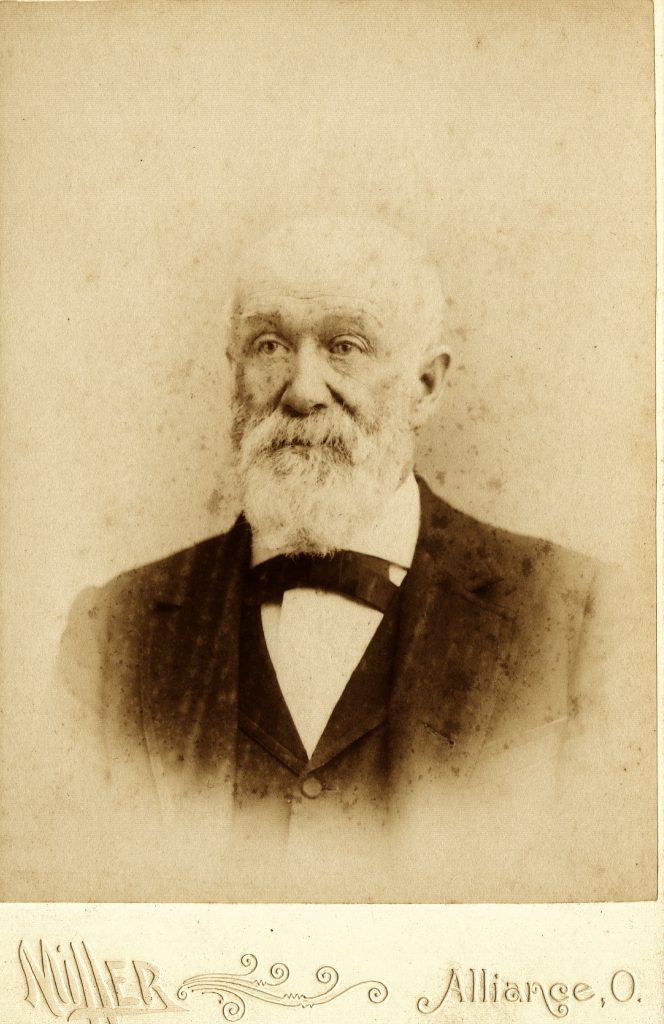


North Benton
Recollections and History of my old home town
Our Social Center
North Benton was the social center for our family. We participated in the Presbyterian Church activities, the Sunday services, casserole dinners, and most friends were there. Malmsberry’s service on Rt 14 was the place to get gas and a bottle of “pop” (We did not drink sodas in Ohio). Malmsberry’s filling station was also a place to “hang out” with friends in our teenagers, although it was not fully approved. John Malmsberry, with his small tank truck, came to our farm to fill the gas tank in our garage, which was used for both tractors and automobiles. During war years, gas was rationed, but with a ration allocation for the tractor, we had enough gas to get by if we were careful. However, we also washed our hands in it when they were greasy from making repairs on machinery. Axle grease was always black and messy. Some machinery required more grease and oil every time we used it.
Our mail delivery came from Berlin Center, but if we needed Postal services, the North Benton Post office was more convenient. Our school was in Deerfield and we had friends there, but North Benton was the special place we called home Many of our personal friends attended North Benton through 8th grade and then went to Sebring High School.
Mother played afternoon bridge every month with the elite ladies of North Benton until she began teaching full time. Of course, there was an ongoing competition as to who could serve the best edible creations for refreshments.
Casual shopping was mostly done in North Benton, primarily at Best’s General Store. The store was on Rt 14 at the railroad tracks across from the grain mill. One could buy almost anything at that store, from fresh cut meats, canned goods, cooking staples, cloth, nails, bolts, harness accessories such as reins and leather straps, essential clothing items, coal, fertilizer, etc. Groceries were under the label IGA (Independent Grocery Association). The store had a railroad siding as did the grist mill on the other side of route 14 and in the winter, there would be a coal gondola waiting. You could stop by and buy a bushel or a couple of tons of coal. Best’s would even deliver if needed.
Occasionally, it was more convenient to buy some groceries at the general store on the square at North Benton. This store was started by Ashley Strong, one of Alonzo’s sons and Joel Malmsberry, his brother-in-law, in the late 1800s. Wendel Strong, Ashley’s brother also was involved but sold his interest and went back to work the farm for a year or two. Wendel then owned and operated a hardware store in Ravenna. After a few years, Ashley bought out Joel’s interests. Ashley died ca. 1921, and the store had been handed off to other owners. I remember stories of my grandmother driving her buggy to her brother-in-law’s store while knitting one woolen stocking on the way and the other on the way back to the Strong farm. In the 1940s, the store was smaller and not stocked as well as Bests, basically only providing groceries and household incidentals.
Another commercial establishment was located on Rt. 14 about half a mile toward Deerfield. This was a filling station and restaurant operated by the Santee’s. We frequently stopped at Santee’s after church for the Sunday edition of the Cleveland Plain Dealer. Santee’s also operated several tourist cabins in the wooded lot behind their store. Local stories indicate that the Santees paid boys to collect snakes and toss them on the Chester Bedell grave to attract tourist trade for the cabins. I had not heard of it at the time. The cabins did attract a band of gypsies every year.
Best’s Store was truly a general store. Merle worked at the store part-time from when he was 15 until he was drafted into the Army. The owner, Charlie Best, was an old-time resident of the North Benton area.
North Benton’s Origin
The area that became North Benton was acquired as a land grant by William Smith an early judge in Columbiana County. He heard his first case in Lisbon in 1803. Smith Township, was named in his honor. He was Scotch Irish, born in Ireland, and immigrated to the United States when he was 5 years old. He apprenticed as a blacksmith but later studied as a lawyer. Our family is related to him as shown in the Chart. He is Albert’s GG Grandfather.
The area was deeded to Smith by the president of the United States, Thomas Jefferson, and was signed by him and James Madison, secretary on July 13, 1803. The description of the land is set forth as being northwest of the Ohio river and above the mouth of the Kentucky river, which is an indication of the vastness of the Northwest territory. One would hardly describe North Benton’s location this way today.
North Benton was laid out in 1834 and a post office was established in 1835. The town extends partially into Deerfield Township so it straddles the boundary between Mahoning and Portage Counties. This boundary is also the boundary of the Western Reserve. Until 1846, it was in Columbiana County but was redistricted into Mahoning County at that time, along with Springfield, Beaver, Green, Goshen Townships.
William Smith lived in York County, PA, but moved to Ohio by 1801. He moved to North Benton and died there in 1837. I believe his big brick house was the Malmsberry home in the 1930s. He had been born in Ireland (Northern Ireland), arrived in the colonies in 1759, probably through Philadelphia. He married Jannet (Jane) Wilson in Philadelphia ca 1790 and they had a large family.
The executor of his estate was Abraham Hartzell, his son-in-law who married his daughter Mary. The Hartzell’s were also related to the Strong family via Alonzo’s first wife Christina Lazarus, whose mother was a Hartzell.
The Presbyterian Church is celebrating its 200th birthday (2018). The Church was actually started in Deerfield and then moved to North Benton, taking over the property of the Methodist Church..
Hopewell Indian mounds are located just West of the Presbyterian Church. These Indians occupied the Mississippi and Ohio River valleys until about 500 CE but then disappeared without much trace. Some Archeologists excavated the mounds in the 1930s, and found some artifacts there, but not much was known locally about what they found. The mounds were the private burial ground of William Smith and some other early residents, but their remains were moved to the Hartzell cemetery when the archeologist made their excavations.
Aviation
Russel Miller, a student of my mother in the one-room school, became a teacher in Alliance High School. His younger sister, Jean, married David Kile. Russel built a very nice home just East of the Church, across 12th Street. He learned to fly and owned a biplane which he flew from a farmer’s field just to the West of town. On nice Sundays, it was a popular occupation to stop and watch him take off and land with his biplane. Russel then started Miller Field, which became a very active airport in the early 1950s. Russell retired from teaching school and made his living from aviation. For a period in the late 1940s, he had an amphibious airplane he used for charters into Canada for hunting and fishing. Unfortunately, he had a forced landing in Lake Erie and lost that airplane.
The One Room School
North Benton Elementary school, a two-room schoolhouse was in use as late as the mid 1940s. My mother taught there for a year before she married. Hazel Hartzell, (our neighbor) taught there for many years. Several of my friends attended school there until 8th grade and then went to Sebring High School. The building is still in use as the North Benton Post Office. We lived in Deerfield Township, so we attended the school with grades 1 through 12 in a single building.